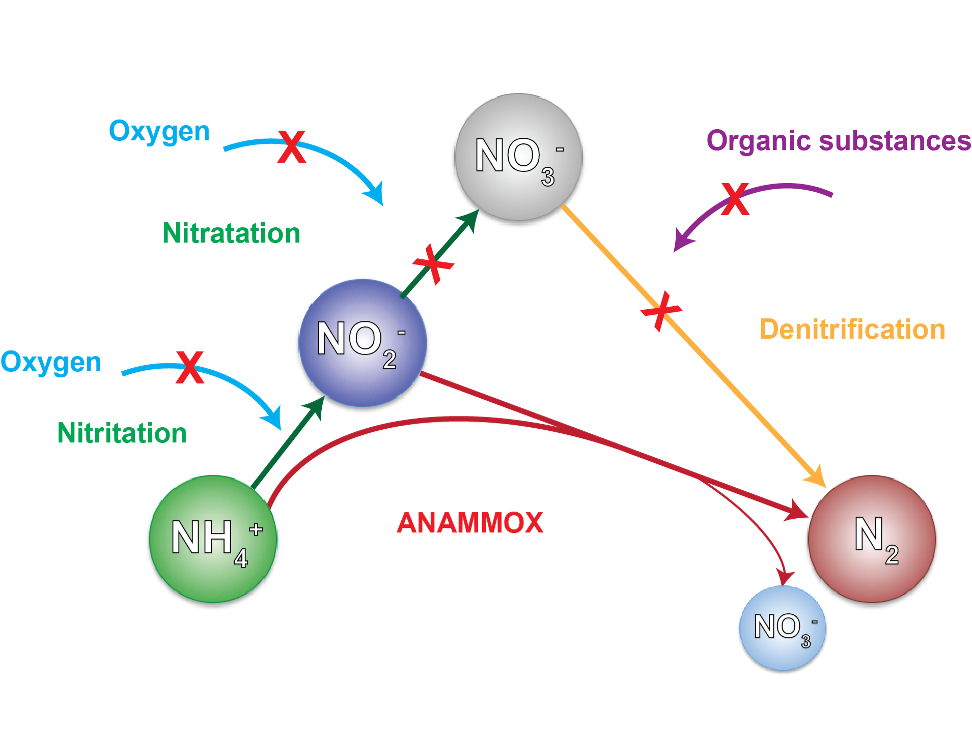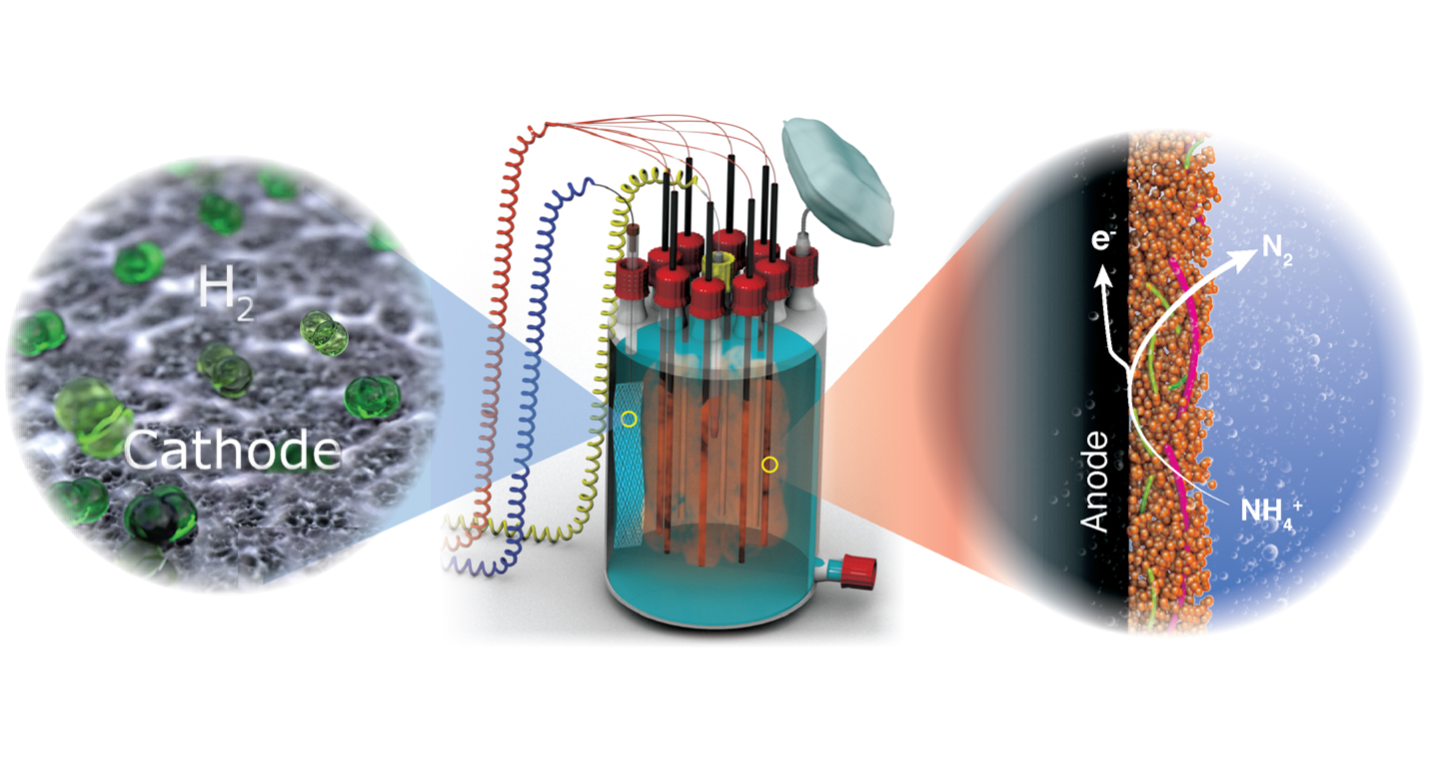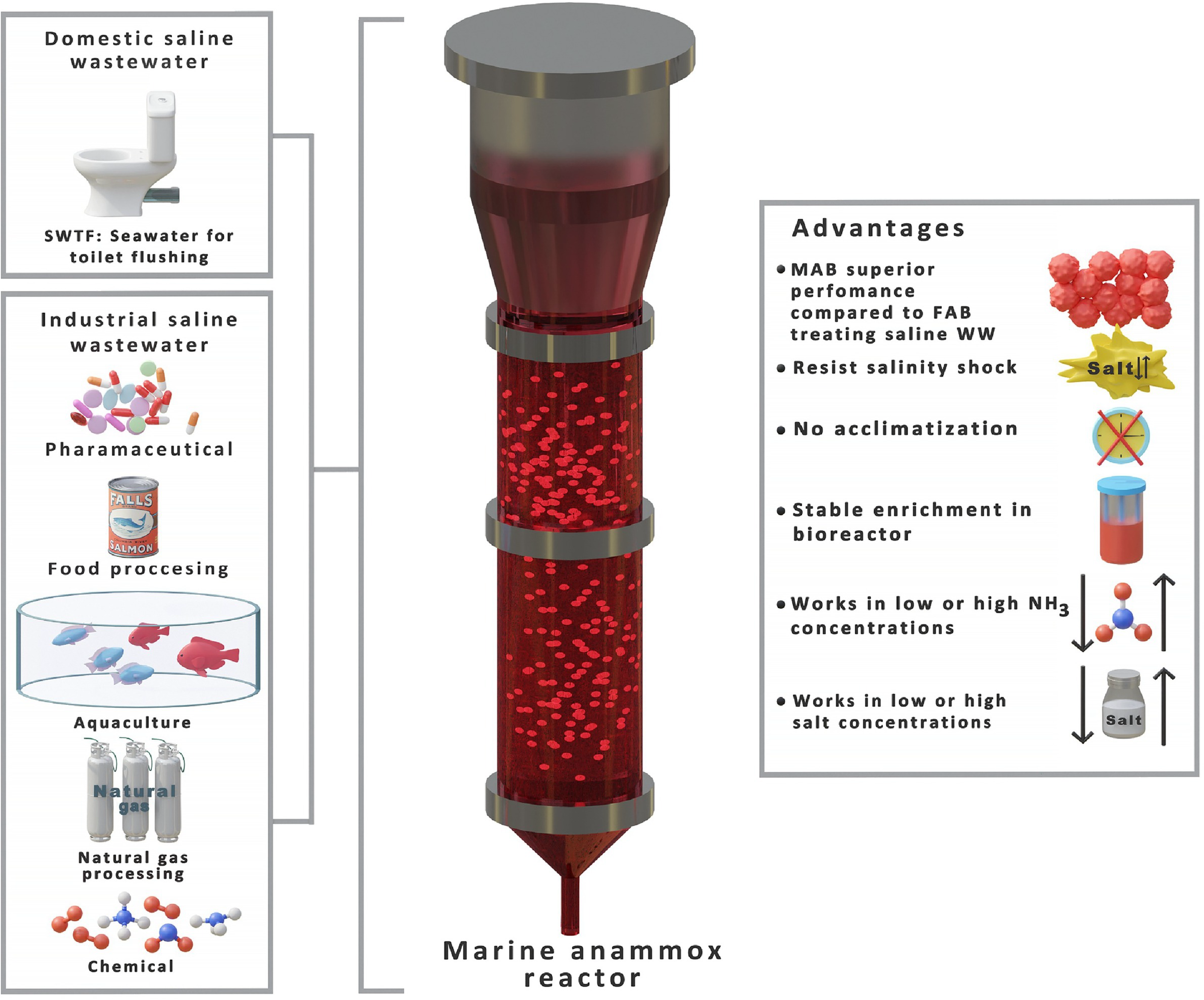1. Anammox Overview
Anaerobic ammonium oxidation (Anammox) is a sustainable and efficient process for treating ammonium from wastewater. In the anammox process, ammonium (NH₄⁺) is directly oxidized to dinitrogen (N₂) gas using nitrite (NO₂⁻) as the electron acceptor. By bypassing conventional nitrification–denitrification, anammox reactors reduce aeration demands and sludge production, offering up to 60 % lower operational costs compared with traditional systems.
Our laboratory has been exploring the diversity and physiology of novel anammox microorganisms and their metabolic pathways for niche-specific applications. By isolating new strains and characterizing alternative reaction routes, we aim both to elucidate anammox ecology and to translate these insights into next-generation biotechnologies.
- 100 % decrease in external carbon-source demand
- ≈60 % reduction in oxygen (aeration) demand (60 % less energy)
- 75 % reduction in biosolids production
- Little to no N₂O (greenhouse-gas) emissions



2. Electro-Anammox: Extracellular Electron Transfer
Recently, our research group discovered that marine and freshwater species of anammox bacteria are electroactive and can oxidize ammonium under strictly anaerobic conditions by transferring electrons to an electrode via an extracellular electron-transfer (EET) process. We have termed this novel pathway “Electro-anammox”.
Unlike conventional anammox, Electro-anammox does not accumulate nitrite or nitrate and does not produce the greenhouse gas N₂O. Also, the energy released from ammonium oxidation can be captured in the form of energy-rich hydrogen gas (H₂) at the cathode.
- First demonstration of extracellular electron transfer in anammox bacteria
- Electron transfer across three membranes—from the anammoxosome to the electrode
- Multi-heme c-type cytochromes mediate extracellular respiration
- No external aeration or nitrite supplementation required
- Electric current or H₂ production in microbial electrolysis cells

In the News
3. Marine Anammox
Over 50% of the world’s population resides within 60 km of the coast, and seawater can be directly utilized for non-potable uses such as toilet flushing (30% of the total domestic water demand) to reduce the demand on freshwater resources and energy intensive processes such as desalination. However, conventional treatment systems struggle with such high salinity. Specifically, the salt load in wastewater from seawater toilet flushing suppresses the nitrogen-removing bacteria used in standard processes.
To address this challenge, we cultivated native Red Sea microbes and enriched a novel marine anammox bacterium from the Red Sea, Candidatus Scalindua erythraensis. This organism efficiently removes nitrogen across an wide range of salinities, ammonium concentrations, and temperatures.
Building on this discovery, we developed a novel single-stage granular partial nitritation-anammox system for the treatment of nitrogen in domestic wastewater. It is a novel system for removing nitrogen under high-salinity conditions, and across a wide range of ammonium levels and temperatures.

